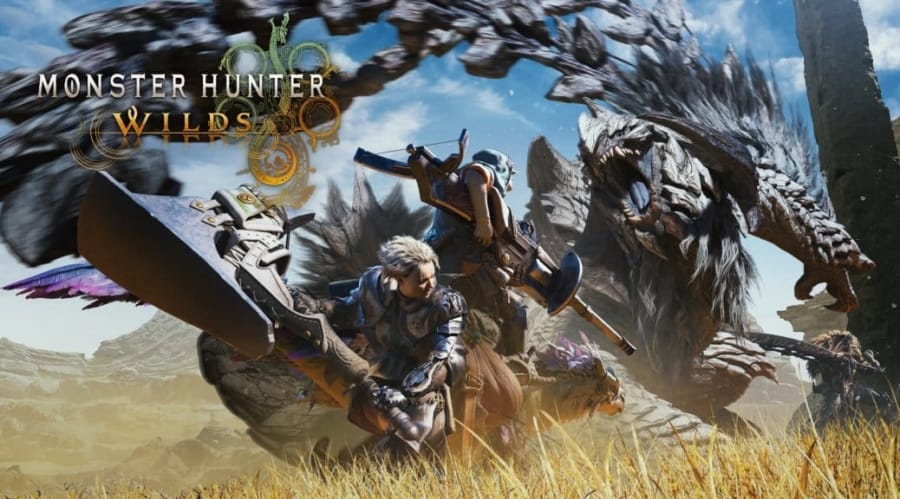Monster Hunter: Wilds Spiel
Wilds starts off with the new system that is the “Seikret”, that is the animal/monster mount. With the new open world design, it appears the game opted to provide a mount to travel around. In my playthrough, Seikret worked more or less as a mobile platform to continue the hunt, not the mean to explore: that’s where you would switch to secondary weapon, that’s where you would sharpen your weapon, pick up some potions and rations, and so on. Being able to engage on the target with speed from some height, if that was your concern, is possible, but as a mount, I believe I’ve seen better steeds in arena mechanics. This put the game on par with many open world, boss-slaying type of RPGs, but the title doesn’t stop being a Monster Hunter game; and as unironically as it might sound, the price for the compromise shows.
Take, for example, the secondary weapons. If I recall correctly, World did not have secondary weapons in inventory —and technically Wilds doesn’t support quick change either. The system would have worked if the situation during a hunt calls for a secondary weapon. But the game, significant part of the hunt, relies on single weapon RPG of old. No monsters, as I far as I could see, drastically changes its behavior to a point where I would change my Dual Blades to a Bow. Are there dual weapon strategies being developed? Perhaps. But as far as I could see, the game doesn’t make a strong case for one. Same goes for the Seikret and open world design; it’s there, but it doesn’t bring much to the table other than staying on par with other games.
As for the hunt itself, —I wouldn’t call it combat— you are still a hunter. There is some expectancy of knowing what animals you will be hunting. Wilds took “hunting big scaly monsters” to another level with wounds and focus mechanic, but I can’t help but notice some of the RPG conventions are still out-of-date. One such example would be its infamous controller layout issue. I, for myself, was confused why the game wouldn’t want to take advantage of adaptive triggers and instead opt to use buttons. This isn’t Capcom’s first rodeo with Dual Sense, let alone controllers in general, and I expect more from a AAA title.
What truly solidifies the impression I received that Wilds is mostly a work of compromise is from its major plot —it’s weak. As a hunter, your role in the world of Monster Hunter is set in stone; you hunt. The majority of the discussions you partake in as a Guild member mostly boils down to someone proposing a solution for mere mortals, whereas your ability, quite frankly god-like, decides to step in and deliver the ideal answer. The plot sets up two real-world opposing ideas, often not articulated enough through characters’ own words, then throws the Hunter who can fix it. To sully the good name that is Monster Hunter, it might have been better to be honest with its title — just hunt.
Conclusions: Great MH, But w/o Branding?
Capcom has already announced several new contents updates for Wilds. I can’t speak for how many content updates, including paid and non-paid, are planned ahead, but the game has some solid grounds to add more contents (read: more monsters). As the latest installment to the franchise, it is a great one at that too. However, I can see other games catching up to the unique recipe only Monster Hunter almost monopolized for two decades. As much as I enjoy and recommend Monster Hunter: Wilds, it also leaves me with some worries —how dated will it look once a DLC for Wilds land.
